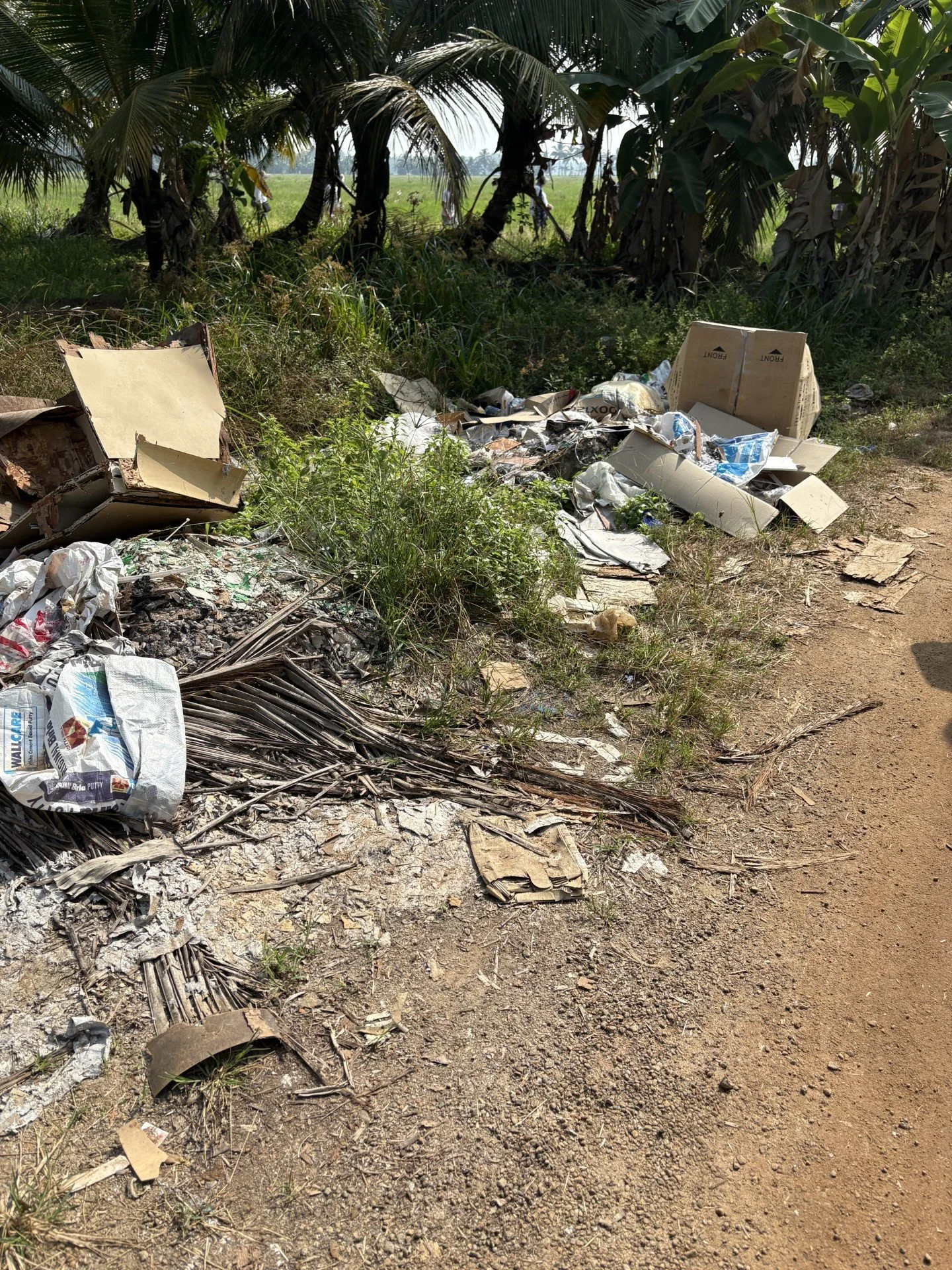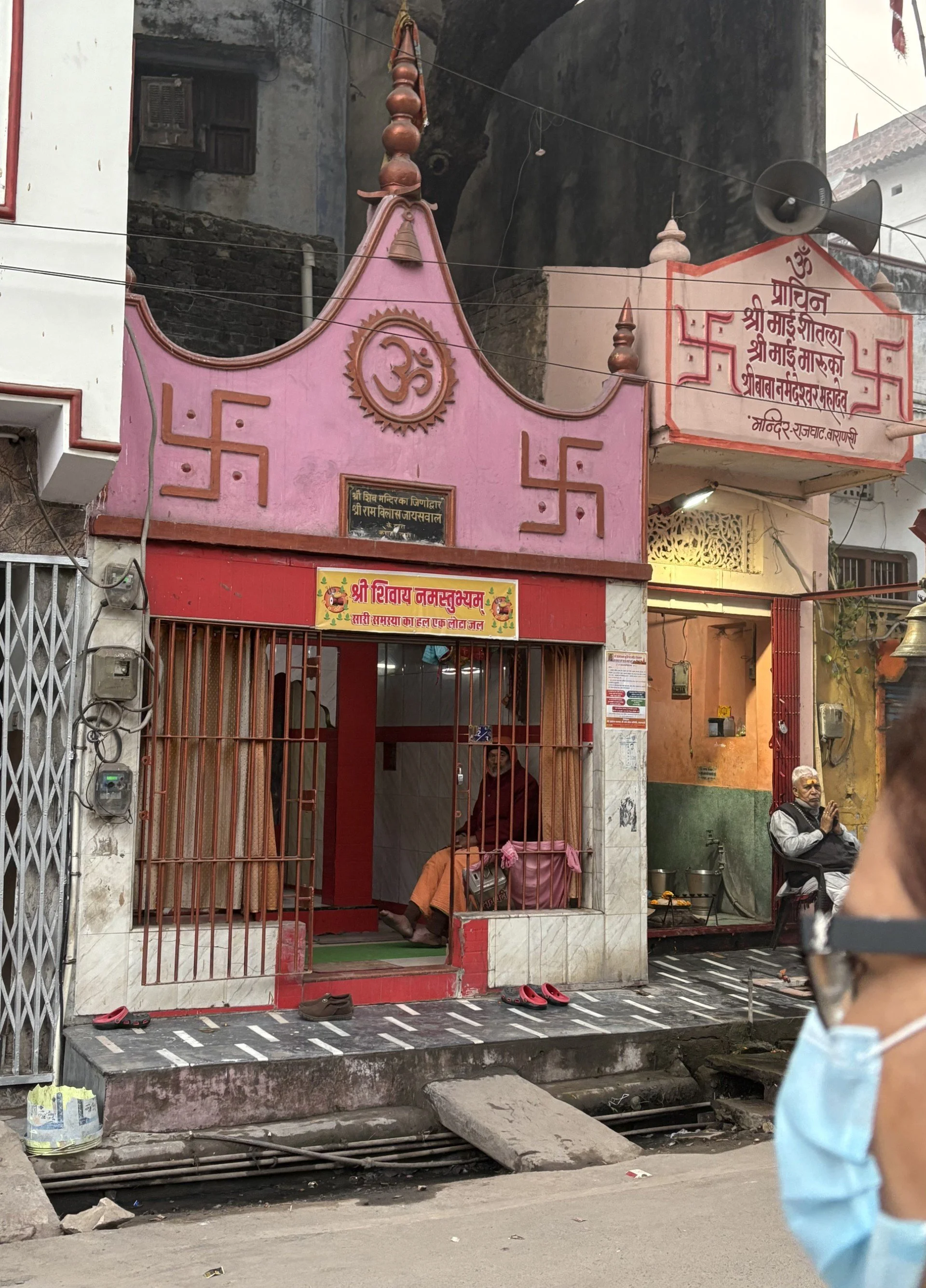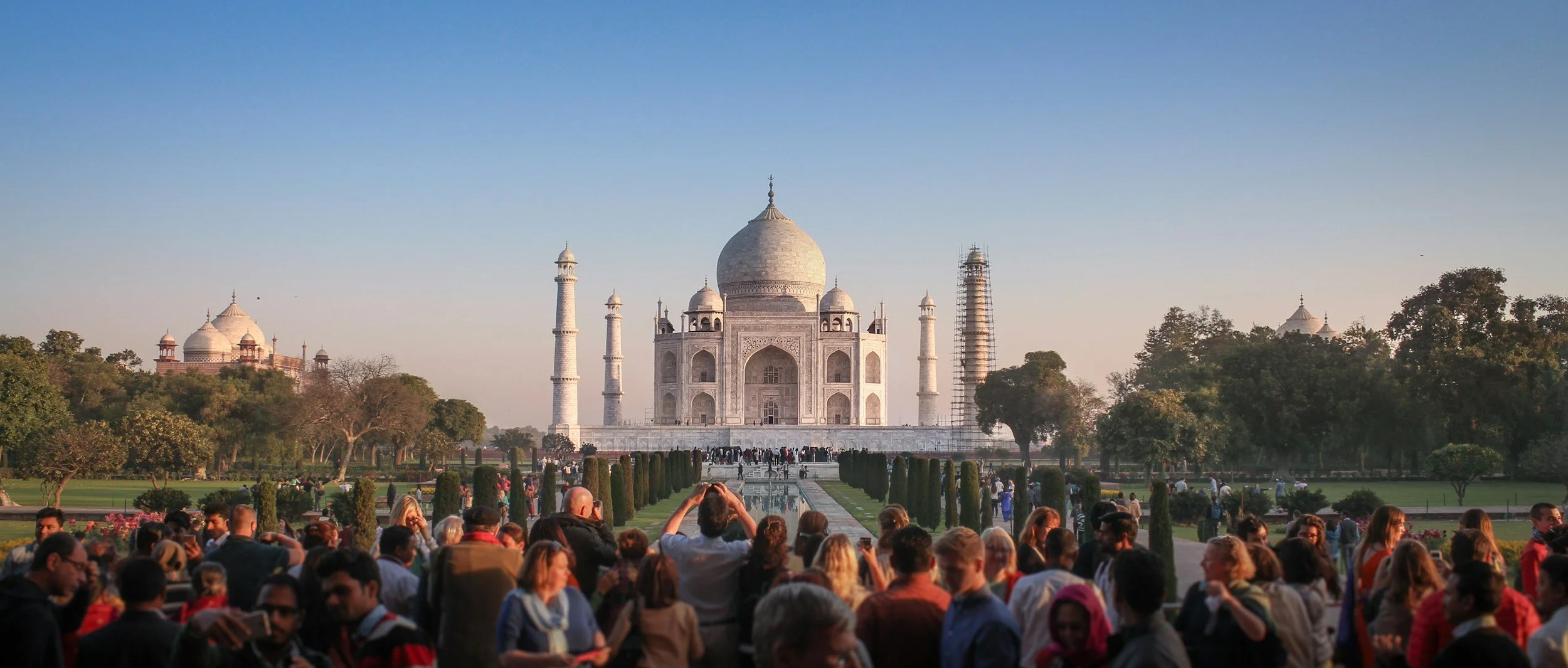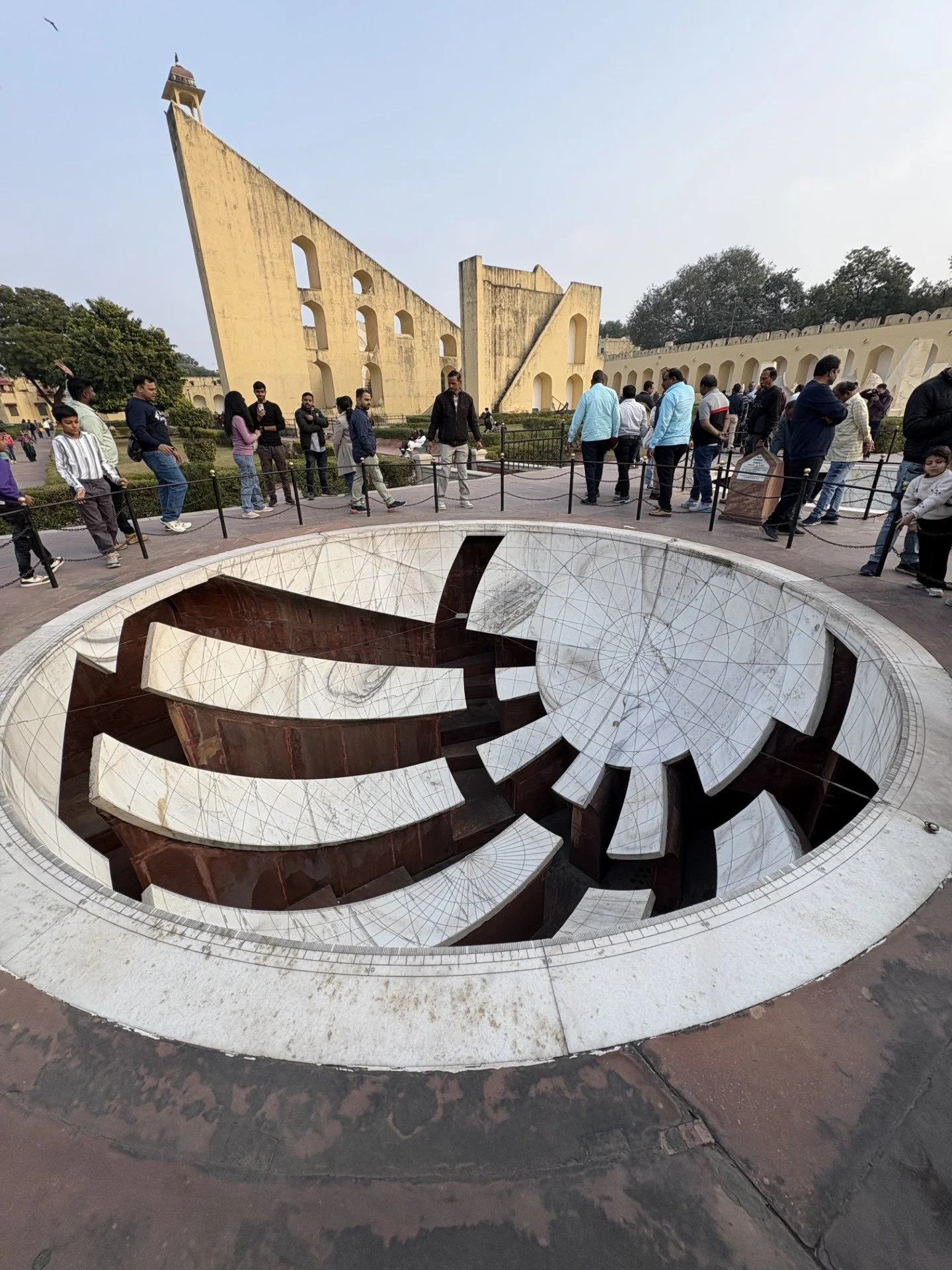# 133 First Look at India
Highlights of a busy January trip
photo by Joan Naidorf
I spent most of January traveling around the vast, crowded, and complicated country of India. Rather than go through my day by day, in the interest of brevity, I am going to review some highlights and some lowlights of our nearly three-week trip.
Kudos to the ground services and crew at Dulles International Airport who managed to get us out in the midst of a rather large snow storm in early January. Flying times to India are very long and between early arrival at the airport, a de-icing delay, a layover in Dubai, and waiting for a second three-hour flight to Delhi, it felt like a full 24-hour day spent in transit.
Breathing it In
The first thing I noticed as I left the airport in Delhi was the very poor air quality. It smelled like the area was on fire. With few home heating systems, night time temperatures in the 40’s prompts folks to burn wood or coal to heat their homes. Moving about Delhi and later in Varanasi, the particulates in the air were quite noticeable.
In India, many people adhere to Hinduism, a major world religion comprising several systems of philosophy, belief, and ritual. Earth serves various symbolic roles: the physical realm of existence, a nurturing entity, a representation of Aditi, the goddess mother of the gods, and a stable place in the cosmos. The sad truth is that many of the 1.3 billion people who live in India, are not taking care of planet earth. They are treating the land as a huge trash dump.
lot in Kerala photo by Joan Naidorf
Any vacant space seems to become the dumping site for all the community garbage. The toxic chemical runoff from the closely gathered manufacturing shops in the Mumbai slum of Dharavi run off right into the Arabian Sea. The mix of fog, air pollution, and haze obscure the view of the Mumbai skyline that soars just a mile or two away from our bay-front hotel. I suppose that when surviving is the priority, the care of the planet takes a far-back seat.
Joining a Guided Tour
We took a guided tour to be sure that we understood and hit the highlights of this vast country. Most signs are in Sanskrit, and they drive in the British style, on the left side of the road, with one hand constantly on the horn. One of the first sites we visited was the Birla House, now called Ghandi Smriti, where Ghandi lived at the time of his assassination in 1948.
The site has been turned into a monument and a museum to the life and work of “the Great Souled” one who Gandhi, the great leader who helped guide India to independence in 1947 with a policy of nonviolent protest.
The other two highlights of New Delhi are Humayan’s Tomb, considered the inspiration for the Taj Mahal and the “Qutub Minar,” one of the world’s tallest minarets. For hundreds of years, this was the tallest structure in Delhi. Our local guide knew just the right angle for the best pictures. These are sacred sites in use for centuries by both Hindu and Muslim people.
From Bustling Delhi to Spiritual Varanasi
Considered one of the seven sacred cities of Hinduism, Hindu pilgrims come to Varanasi to worship at the sacred Mother Ganga River, known as the Ganges. On a nightly basis, thousands of people crowd the riverside area to pray and to witness the coordinated chantings and fire-twirling of several young Hindu priests. We saw that spectacle from a boat on the river.
At several ghats (sets of stairs leading down to the river,) families gather to honor the dead with the traditional funeral pyre. Each one requires 600 pounds of wood which adds up quickly for hundreds of daily cremations. Multiple shops in town collect old furniture and felled trees to supply the never-ending need for wood.
Starting in Varanasi, one sees liberal use of the ancient Hindu symbol of the swastika on storefronts and buildings. The ancient sun-like symbol conveys prosperity and good luck. The dark perversion of this symbol by the German Nazi party in the early 20th Century is another example of history’s most cruel cultural thefts.
photo by Joan Naidorf
Several goats and cows walk about freely among locals and tourists near the river’s edge. Then, at sunrise, the group returned to experience how the river wakes up with morning prayers and baths very cold and holy waters. The haze was too thick to take another boat ride but the sights, smells, and sounds of the hundreds of pilgrims, many at life’s end, were overwhelming.
Everyone Visits Agra
After Varanasi, we traveled to the Agra, the city of the Taj Mahal. This was the capital of the Mughal empire from the 16th till the 17th century. The Mughals were a Muslim empire in India from 1526-1857. On the morning after arrival, we visited the Agra Fort in the morning because poor visibility by fog would obstruct the Taj visit. Shah Jahan and his wives lived at the royal palaces within the fort, festooned with arches, mirrors, and spectacular gardens.
When the fog lifted, we visited one of the world’s most iconic sites, the Taj Mahal. It was built by Shah Jahan as a tomb for his most beloved wife, Mumtaz Mahal. She died during the birth of their 14th child! Millions of people visit the site every year and it does not disappoint. The 20,000 people visiting on this day in January felt like a relatively light day for this UNESCO World Heritage Site. People politely jostle for all the best photo spots.
Tuk-tuking around Jaipur
Our next stop was Jaipur, called the Pink City after many of the public buildings were painted pink to please the visiting British ruler. We all took hair-raising rides on tuk-tuks, motorized three-wheeled vehicles, that jostle through the streets. The highlights of the city are the Pink Palace, once the home of the local royalty, and the Jantar Matar.
The Jantar Mantar is a collection of 19 astronomical instruments built by the Rajput king Sawai Jai Singh, the founder of Jaipur, Rajasthan. The monument was completed in 1734. It features the world's largest stone sundial, and is a UNESCO World Heritage Site, visited on this day in January by hundreds of curious visitors. Who knew that people of that era could fathom their place in the universe with so much precision? It is a gem well worth visiting.
photo by Joan Naidorf
Many short visits to India wrap it up here within the so-called Golden Triangle. This area can be visited in a week to ten days. If you shorten the visit, you may miss some of the gems of Udaipur, Kerala, and Mumbai. You can check the Ganges and the Taj Mahal off the bucket list but much more of India awaits. I am going to start arranging some thoughts for part two, coming soon.








